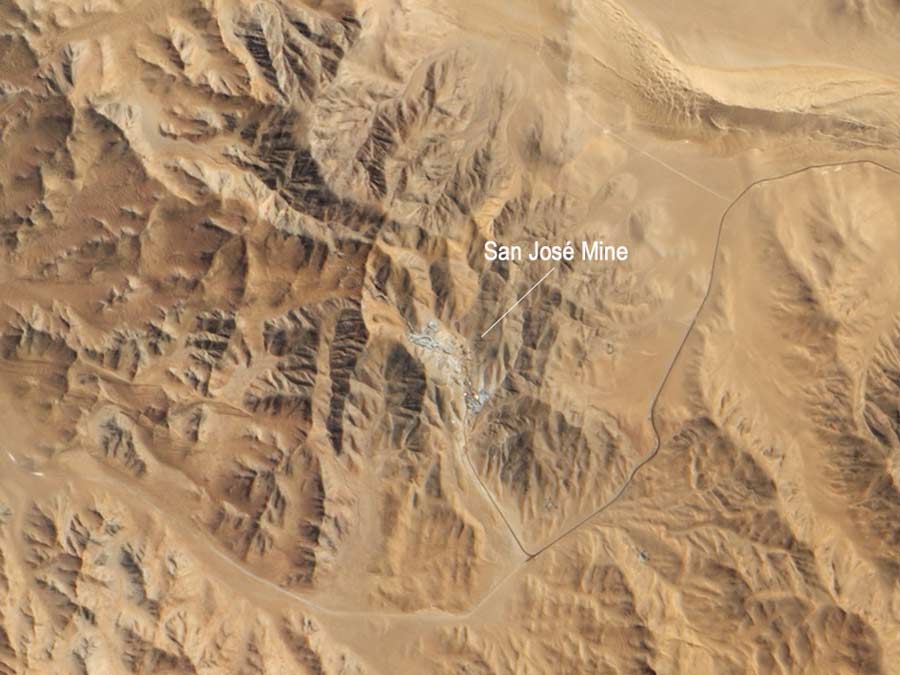Astronauts to Rescued Chilean Miners: 'We Admire You'

The 33 menrescued from a mine in Chile after a record 69 days stuck deep underground havereceived some cosmic praise from astronauts living on the International SpaceStation.
"Fromouter space, we just wanted to let you know how proud we are of you, and howmuch we admire your courage and your tenacity," space station commanderDouglas Wheelock said Wednesday (Oct. 13) as the miners were lifted out of Chile's collapsed San Jose Mine.
Wheelock, aNASA astronaut, is one of six astronauts living aboard the International SpaceStation. The crew includes three Americans and three Russians, all of whomexpect to spend around six months living in space.
"Wewant to congratulate all the miners for their perseverance, and their faith intheir friends and their co-workers that were struggling so many days and somany nights to get them back to safety," Wheelock said.
The Chilean miners were trapped 2,200 feet (670 meters)underground during an Aug. 5 collapse. They maintained contact with the surfaceusing a small support tunnel, which allowed rescuers to send down supplies andfood. [Graphic: Perils of Underground Mining]
"Godspeedto everyone," Wheelock said. "It's truly an answer to prayer. You'vebeen in our thoughts these last several months and several weeks, andcongratulations."
NASA senttwo medical doctors, a psychologist and an engineer to aid the rescue effort.The experts drew on NASA's experience with long-duration space station missionssuch as that of Wheelock and his crew to suggest ways to keep the miners healthy and in good mental health.
Get the Space.com Newsletter
Breaking space news, the latest updates on rocket launches, skywatching events and more!
NASAengineer Clint Cragg of the agency's Langley Research Center in Virginiaoffered advice on the design of the one-man rescue capsule used haul the minersout of their subterranean prison.
"When Isaw the first miner being extracted I was both happy and very relieved,"Cragg said.
Thereare still medical concerns forthe Chilean minersnow that they are back on the surface. After months living underground, theymay suffer from sunburned eye, fungal infections and post-traumatic stress,medical experts have said.
Join our Space Forums to keep talking space on the latest missions, night sky and more! And if you have a news tip, correction or comment, let us know at: community@space.com.

Tariq is the Editor-in-Chief of Space.com and joined the team in 2001, first as an intern and staff writer, and later as an editor. He covers human spaceflight, exploration and space science, as well as skywatching and entertainment. He became Space.com's Managing Editor in 2009 and Editor-in-Chief in 2019. Before joining Space.com, Tariq was a staff reporter for The Los Angeles Times covering education and city beats in La Habra, Fullerton and Huntington Beach. In October 2022, Tariq received the Harry Kolcum Award for excellence in space reporting from the National Space Club Florida Committee. He is also an Eagle Scout (yes, he has the Space Exploration merit badge) and went to Space Camp four times as a kid and a fifth time as an adult. He has journalism degrees from the University of Southern California and New York University. You can find Tariq at Space.com and as the co-host to the This Week In Space podcast with space historian Rod Pyle on the TWiT network. To see his latest project, you can follow Tariq on Twitter @tariqjmalik.









